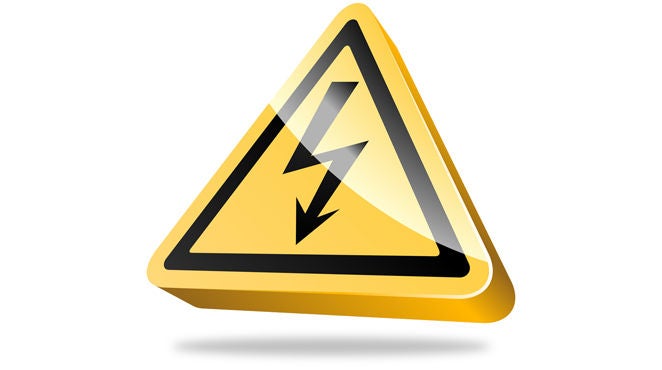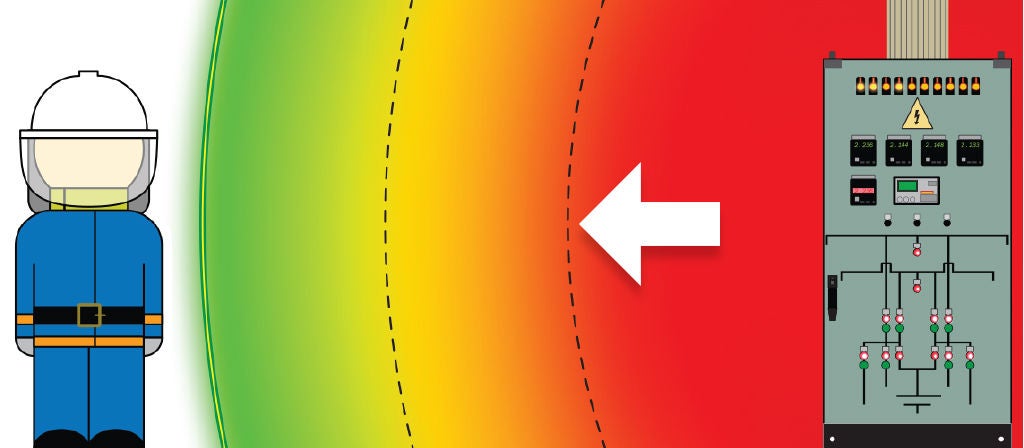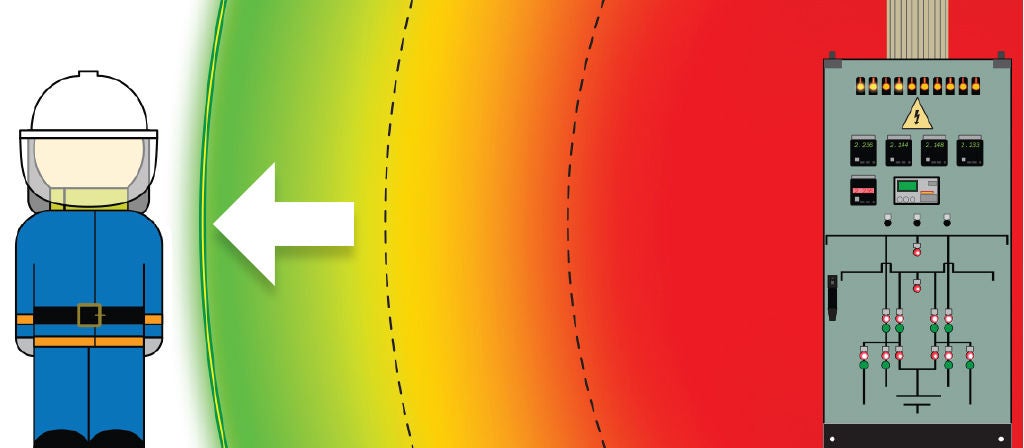While the preferred method of mitigating exposure to electrical hazards is to completely remove the source of electrical energy, it is not always practical. Therefore it is imperative that all electrical hazards are identified, plans are created to mitigate exposure, and proper training and tools are provided to workers to prevent harm from these hazards.
Prevention is the Key to Electrical Safety
Electrical Hazards
The following segment will provide an overview of the three general categories of electrical hazards – electric shock, arc flash, and arc blast – and how to protect workers from injury due to these hazards.
ELECTRICAL SHOCK OVERVIEW
- Electric shock occurs upon contact of a body part with any source of electricity.
- Electric current passes through the body, causing symptoms ranging from a mild tingling sensation, to loss of muscular control, extreme pain, severe burns, respiratory arrest, ventricular fibrillation, or even death.
- It doesn’t take much electrical current to cause injury or death. As little as 5 milliamps is enough to experience physical shock and more than that can cause serious injury. The current required to light a 7½ watt, 120-volt lamp is enough to cause death.
- Shocks can be caused by direct or indirect contact.

Touch Potential
- Electric shock occurs upon contact of a body part with any source of electricity.
- Electric current passes through the body, causing symptoms ranging from a mild tingling sensation, to loss of muscular control, extreme pain, severe burns, respiratory arrest, ventricular fibrillation, or even death.
- It doesn’t take much electrical current to cause injury or death. As little as 5 milliamps is enough to experience physical shock and more than that can cause serious injury. The current required to light a 7½ watt, 120-volt lamp is enough to cause death.
- Shocks can be caused by direct or indirect contact.

Step Potential
- A foot-to-foot current path through the body.
- An example is what happens when a person is in the vicinity of a lightning strike or faulty underground wiring.
- If lightning strikes an object, a voltage difference exists between that object and earth.
- The voltage difference becomes less as the distance from the strike becomes greater.

Arc Flash
- A foot-to-foot current path through the body.
- An example is what happens when a person is in the vicinity of a lightning strike or faulty underground wiring.
- If lightning strikes an object, a voltage difference exists between that object and earth.
- The voltage difference becomes less as the distance from the strike becomes greater.

Arc Blast
- The rapidly expanding air from the arc-fault causes high pressure waves and a sound blast.
- Material in the arc vaporizes, and the explosion causes flying parts.
- The high pressure waves can throw workers across the room or off a ladder, causing physical injuries or death.
- The sound blast can cause temporary or permanent loss of hearing.
- The vaporized metal and plastic material can be breathed in and become imbedded in the throat and lungs.
- The flying material can cause severe shrapnel wounds.

Hazard Mitigation Strategies
Establishing an Electrical Safety Program requires a multi-tiered approach that includes identification, planning, and training.

Identification
- To effectively prevent injuries from electrical hazards, you first must identify what they are, and then perform a risk assessment to determine the severity and protective measures required for each hazard.
- NFPA 70E directly addresses electric shock and arc flash burn hazards, but additional hazards such as thermal burn and arc blast may also exist and must be addressed accordingly.
Planning
- Identifies if, when, and how a worker might be exposed to an electrical hazard, and indicates what steps the worker must take to minimize or avoid that exposure.
- The plan will identify the necessary Personal Protective Equipment (PPE) and when it should be used.


Safety Training
- The majority of electrical injuries result from unsafe work practices.
- Employee training should center on electrical hazards and how each employee is or might be exposed to each hazard.
- Employees must be capable of recognizing where exposure to an electrical hazard exists and understand which standing guidance applies to the work task.
Shock Protection Boundaries
As per NFPA 70E, shock protection boundaries must be established where approaching personnel are exposed to energized electrical conductors or circuit parts. The dimensions are based on maximum voltage of potential exposure, and can be found in Table 130.4(D)(a) of NFPA 70E-2018 for ac systems or 130.4(D)(b) for dc systems.
- Applicable where approaching personnel are exposed to energized electrical conductors or circuit parts
- The dimensions are based on maximum voltage of potential exposure
Restricted Approach Boundary
- The closest approach distance to an energized electrical conductor or circuit part by a qualified worker without additional protection measures.
- Unqualified workers must not cross this boundary under any circumstances.
- If qualified worker crossed boundary, appropriate PPE must be worn.

Limited Approach Boundary
- The closest approach distance to an energized electrical conductor or circuit part by an unqualified worker without additional protection measures.
- Must be advised of the potential hazards by the designated person in charge of the space.
- If required to cross the boundary, must be escorted by qualified person and advised of additional hazards.

Arc Flash Boundary
As per NFPA 70E-2108, the arc flash boundary defines the point where a person is likely exposed to a second-degree burn from and arc flash incident. A person still may get burned outside of this boundary, but would typically be less than a second-degree burn.
NOTE: The arc flash boundary can be either inside or outside of the shock protection boundaries
Arc Boundary
- The distance at which the incident energy equals 1.2 cal/cm2.
- Can be determined by Table 130.7(C)(15)(A)(b) of NFPA 70E-2018 for ac systems and 130.7(C)(15)(B) for dc systems.
- Appropriate PPE must be worn when crossing the boundary.
- Can be determined by using the Incident Energy Analysis method OR by using the Arc Flash PPE Categories Method (but not both).




